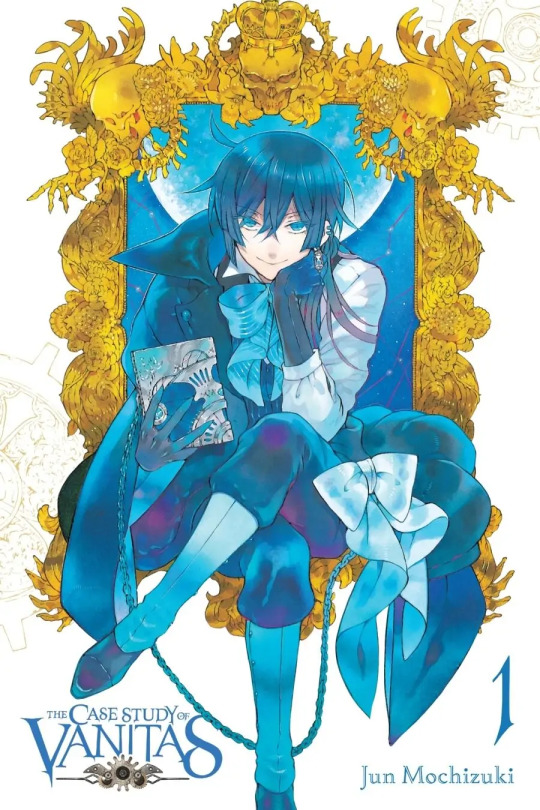#and I think that having two full length manga pages stacked on top of each other in the middle of a post.
Explore tagged Tumblr posts
Note
Sorry to ask, but do you have some meta or opinion about what could be going on regarding Vanitas hourglass earring? It is empty in some panels and then goes back to being full of sand at the bottom.
I don't know if you've read Pandora Hearts, but it reminds me a little of some marks some characters have that indicated how many times could they used certain abilities before dying, or turning into something more twisted and inhuman.
Oh anon, never apologize for asking!
Although, before I really answer, I might have to ask you (or others that know) to point out what panels show his earring as specifically empty? Because I know you don't see the sand clearly every time, but I've always just interpreted that as an artistic shorthand, rather than something particularly meaningful. If there are close/detailed shots that vary with whether the sand is shown, though, that opinion might change.
However, though I'm not too inclined (right now) to read into when we can/can't see the sand in a given panel, I do think the placement of the sand at the bottom has meaning. Aside from it just being where the sand would practically end up in an earring like that, it also works really well as a Vanitas symbol. I think I've talked about this before, but Vnc, especially where Vanitas and Luna are concerned, is filled with references to the Vanitas painting movement. Those paintings are all about reminders of the inevitability of death and the vanity/pointlessness of earthly pleasures in the face of it, and death is kind of Vanitas (the human man)'s whole Thing.
In other words, Vanitas is going to die. The first chapter (and later ominous foreshadowing) assures us that his death is a foregone conclusion. As such, an hourglass with the sand at the bottom works really well as a symbol for him. If the sand has all already run out (which, whenever we see it, it has), then his time has run out as well. The ever-present earring serves as a reminder that Vanitas's death is inescapable. It's a memento-mori!
Also, I do want to point out that, before it was Vanitas's earring, that hourglass was on Luna's bracelet. Vanitas seems to have taken/inherited it along with their book and title, which ties the hourglass (the run-out hourglass, a symbol of death) to the role of "Vanitas" itself. It marks whoever holds the book/name as a symbol of death for vampires, but also marks the oncoming and inevitable death of "Vanitas" themselves. Luna has been dead since before the story even began, and symbolically, so is Vanitas. Their time has all run out.
Then, cementing this even further, the one other time I can remember seeing an hourglass in Vnc that isn't that bracelet/earring is on the inner cover of Volume 1. The whole frame on the front cover of v1 is covered in images (bones, fruit, flowers, gold) straight out of a classic Vanitas painting. And though we can't see the bottom of the frame on the front cover (Vani's leg is in the way), the exact same frame is replicated on the inner cover:


And guess what's at the bottom of the frame. An hourglass! So even though hourglasses were slightly less common in Vanitas paintings than some other symbols (though they were very much still present), I do think this confirms we're meant to take the hourglass as part of the Vanitas (painting) symbolism in Vnc.
So though I have read Pandora Hearts, and I'm familiar with Mochijun's fondness for inscribing countdowns on characters' bodies, I don't think that's what the hourglass is doing. It's not that the sand running out marks how much time he has while he's still human. The fact that the sand has already run out reminds us always that he has been pre-determined to die.
In fact, I think that rather than the hourglass, the cracking scar pattern on Vanitas and Misha's arms actually fulfills the exact symbolic purpose that you're talking about. We know that it spread when Vanitas used a lot of power in Gévaudan, and we know that using the book's power is what's going to cause Vanitas's eventual transformation, so the representation is pretty obviously linked. Plus, it looks like whatever's happening with the cracks on Vanitas's arm is further along on Misha, and Misha seems to be further along in losing his humanity (judging by what happens when the book goes wrong in 54 and 54.5), so once again, we have that correlation.
#I feel like I may have gotten a bit off topic from answering your question in the middle there#but the Vanitas (painting) symbolism in Vnc is one of my favorite things to talk about#and I haven't finished/posted my long volume 1 cover analysis yet#so I couldn't resist the temptation to talk about that. since it was at least a little bit relevant.#vnc#vanitas no carte#vnc spoilers#the case study of vanitas#english major hours#vanitas my beloved#ID in alt text#ask#anon#also forgive me for not putting this under a readmore#but for some reason tumblr won't let me format the images the way I wanted if the readmore is there#and I think that having two full length manga pages stacked on top of each other in the middle of a post.#is even more annoying than scrolling past a bunch of text#long post
65 notes
·
View notes